X3M ransomware removal instructions
X3M ransomware removal instructions
What is X3M?
X3M is a ransomware-type virus discovered by Jakub Kroustek. This malware is very similar to CryptON CryptoLocker ransomware. After successfully infiltrating the system, X3M encrypts files and appends filenames with the ".id-[victim’s ID]_[x3m-pro@protonmail.com]_[x3m@usa.com].x3m" extension. For instance, "sample.jpg" is renamed to "sample.jpg.id-[victim’s ID]_[x3m-pro@protonmail.com]_[x3m@usa.com].x3m". Following successful encryption, X3M changes the desktop wallpaper and creates an HTML file ("### HOW TO DECRYPT FILES ###.html"), placing it on the desktop.
The HTML file contains a ransom-demand message stating that files are encrypted and that the victim must purchase a special decryption tool. It is currently unknown whether X3M uses symmetric or asymmetric cryptography. In any case, decryption without a unique key is impossible. Cyber criminals store this key on a remote server and attempt to sell a decrypter (with an embedded key) to victims. The cost of this tool is currently unconfirmed, however, cyber criminals usually demand the equivalent of between $500 - 1500 in Bitcoins. You should never attempt to contact these people or pay any ransom. Research shows that criminals often ignore victims once payments are submitted. Paying does not guarantee that your files will ever be decrypted and you will probably be scammed. Unfortunately, there are no tools capable of restoring files encrypted by X3M and, thus, you can only restore your files/system from a backup.
Screenshot of a message encouraging users to pay a ransom to decrypt their compromised data:
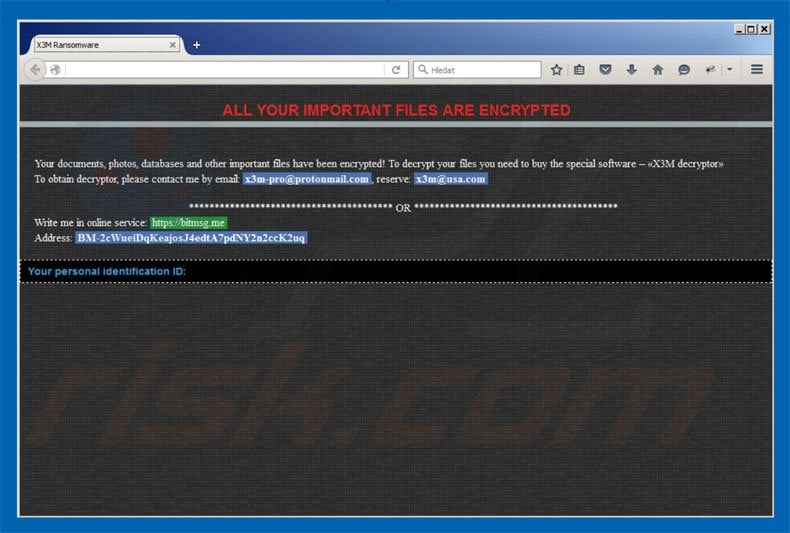
X3M is virtually identical to hundreds of other ransomware-type viruses such as Flotera, ZinoCrypt, Kirk, and Revenge. As with X3M, these viruses also encrypt files and make ransom demands. The only major differences are size of ransom and type of encryption algorithm used. Be aware that cyber criminals often proliferate ransomware-type viruses using spam emails (infectious attachments), peer-to-peer networks (eMule, torrents, etc.), third party software download sources (freeware download websites, free file hosting websites, etc.), trojans, and fake software updaters. Therefore, never open files received from suspicious emails or download software from unofficial sources. Furthermore, use a legitimate anti-virus/anti-spyware suite and keep your installed applications up-to-date. Bear in mind, however, that cyber criminals proliferate malware via fake software update tools and, therefore, never use third party tools to update your installed apps.
Text presented within X3M ransomware HTML file ("### HOW TO DECRYPT FILES ###.html"):
ALL YOUR IMPORTANT FILES ARE ENCRYPTED
Your documents, photos, databases and other important files have been encrypted! To decrypt your files you need to buy the special software - X3M decrypto To obtain decryptor, please contact me by email: x3m-pro@protonmail.com, reserve x3m@usa.com Write me in online service: https://bitmsg.me Address:BM-2cWueiDqKeajosJ4edtA7pdNY2n2ccK2uq
Screenshot of X3M desktop wallpaper:
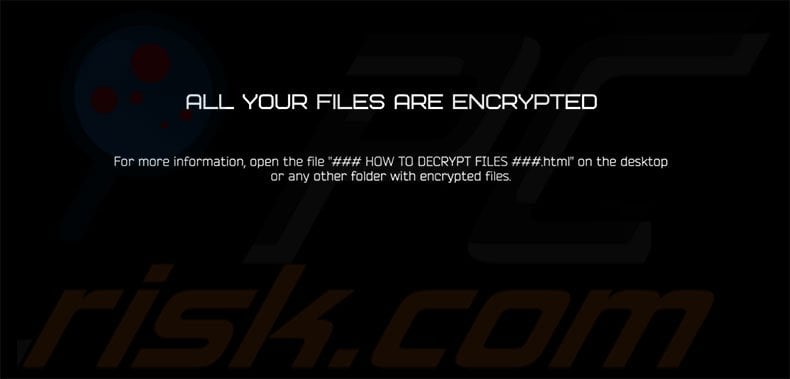
Screenshot of files encrypted by X3M ransomware ".id-[victim’s ID]_[x3m-pro@protonmail.com]_[x3m@usa.com].x3m" extension:
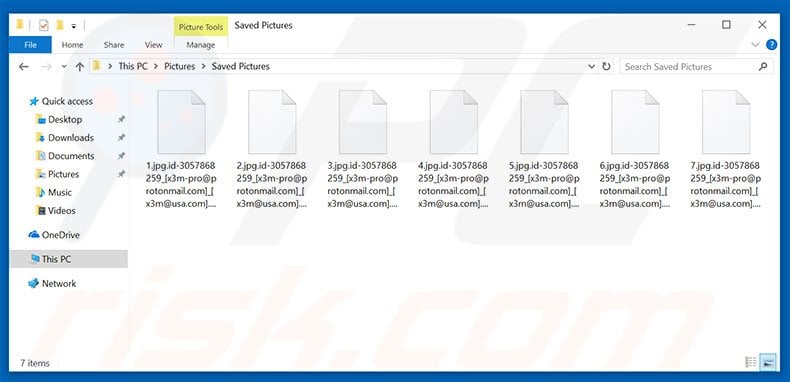
X3M ransomware removal:
Quick menu:Quick solution to remove .x3m virus
- What is X3M?
- STEP 1. X3M virus removal using safe mode with networking.
- STEP 2. X3M ransomware removal using System Restore.
Step 1
Windows XP and Windows 7 users: Start your computer in Safe Mode. Click Start, click Shut Down, click Restart, click OK. During your computer start process, press the F8 key on your keyboard multiple times until you see the Windows Advanced Option menu, and then select Safe Mode with Networking from the list.

Video showing how to start Windows 7 in "Safe Mode with Networking":
Windows 8 users: Start Windows 8 is Safe Mode with Networking - Go to Windows 8 Start Screen, type Advanced, in the search results select Settings. Click Advanced startup options, in the opened "General PC Settings" window, select Advanced startup. Click the "Restart now" button. Your computer will now restart into the "Advanced Startup options menu". Click the "Troubleshoot" button, and then click the "Advanced options" button. In the advanced option screen, click "Startup settings". Click the "Restart" button. Your PC will restart into the Startup Settings screen. Press F5 to boot in Safe Mode with Networking.
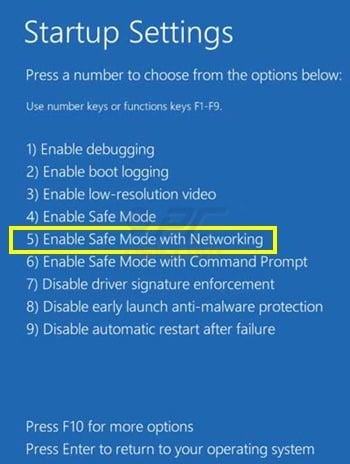
Video showing how to start Windows 8 in "Safe Mode with Networking":
Windows 10 users: Click the Windows logo and select the Power icon. In the opened menu click "Restart" while holding "Shift" button on your keyboard. In the "choose an option" window click on the "Troubleshoot", next select "Advanced options". In the advanced options menu select "Startup Settings" and click on the "Restart" button. In the following window you should click the "F5" button on your keyboard. This will restart your operating system in safe mode with networking.
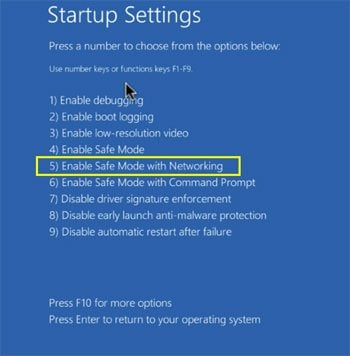
Video showing how to start Windows 10 in "Safe Mode with Networking":
Step 2
Log in to the account infected with the X3M virus. Start your Internet browser and download a legitimate anti-spyware program. Update the anti-spyware software and start a full system scan. Remove all entries detected.
If you need assistance removing x3m , give us a call 24/7:
1-866-208-0865
1-866-208-0865
By downloading any software listed on this website you agree to our Privacy Policy and Terms of Use. SpyHunter’s free scanner is for malware detection. To remove the detected infections you will need to purchase a full version of this product. More information on SpyHunter. If you wish to uninstall SpyHunter follow these instructions. All the products we recommend were carefully tested and approved by our technicians as being one of the most effective solutions for removing this threat.
If you cannot start your computer in Safe Mode with Networking, try performing a System Restore.
Video showing how to remove ransomware virus using "Safe Mode with Command Prompt" and "System Restore":
1. During your computer start process, press the F8 key on your keyboard multiple times until the Windows Advanced Options menu appears, and then select Safe Mode with Command Prompt from the list and press ENTER.
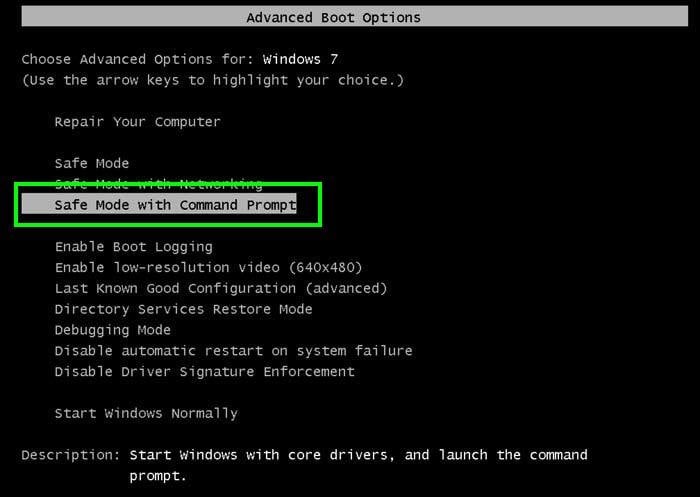
2. When Command Prompt mode loads, enter the following line: cd restore and press ENTER.

3. Next, type this line: rstrui.exe and press ENTER.

4. In the opened window, click "Next".
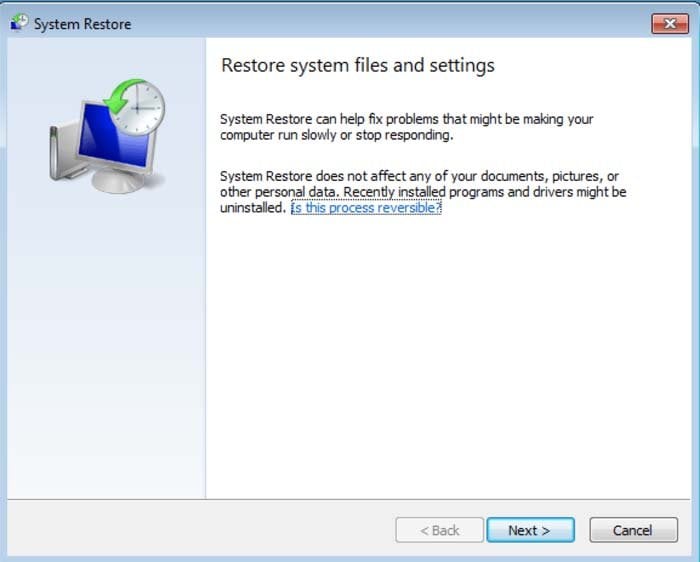
5. Select one of the available Restore Points and click "Next" (this will restore your computer system to an earlier time and date, prior to the X3M ransomware virus infiltrating your PC).
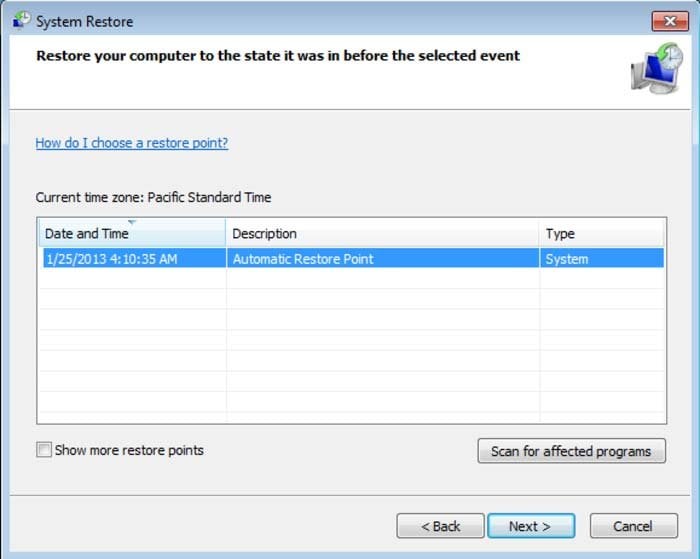
6. In the opened window, click "Yes".
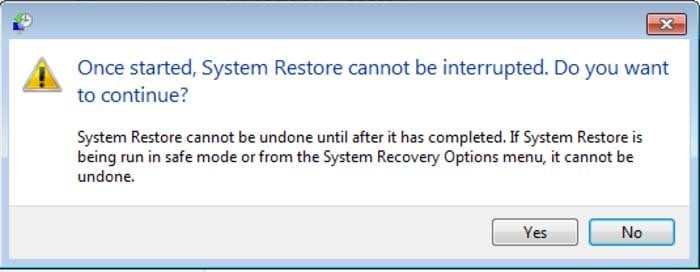
7. After restoring your computer to a previous date, download and scan your PC with recommended malware removal software to eliminate any remaining X3M ransomware files.
To restore individual files encrypted by this ransomware, try using Windows Previous Versions feature. This method is only effective if the System Restore function was enabled on an infected operating system. Note that some variants of X3M are known to remove Shadow Volume Copies of the files, so this method may not work on all computers.
To restore a file, right-click over it, go into Properties, and select the Previous Versions tab. If the relevant file has a Restore Point, select it and click the "Restore" button.
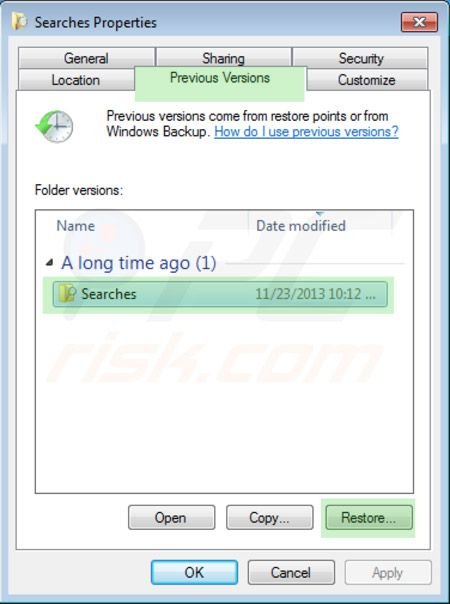
If you cannot start your computer in Safe Mode with Networking (or with Command Prompt), boot your computer using a rescue disk. Some variants of ransomware disable Safe Mode making its removal complicated. For this step, you require access to another computer.
To regain control of the files encrypted by X3M, you can also try using a program called Shadow Explorer. More information on how to use this program is available here.
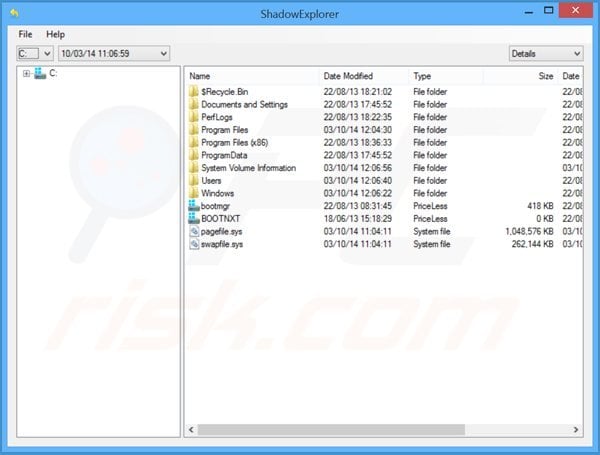
To protect your computer from file encryption ransomware such as this, use reputable antivirus and anti-spyware programs. As an extra protection method, you can use programs called HitmanPro.Alert and EasySync CryptoMonitor, which artificially implant group policy objects into the registry to block rogue programs such as X3M ransomware.
HitmanPro.Alert CryptoGuard - detects encryption of files and neutralises any attempts without need for user-intervention:
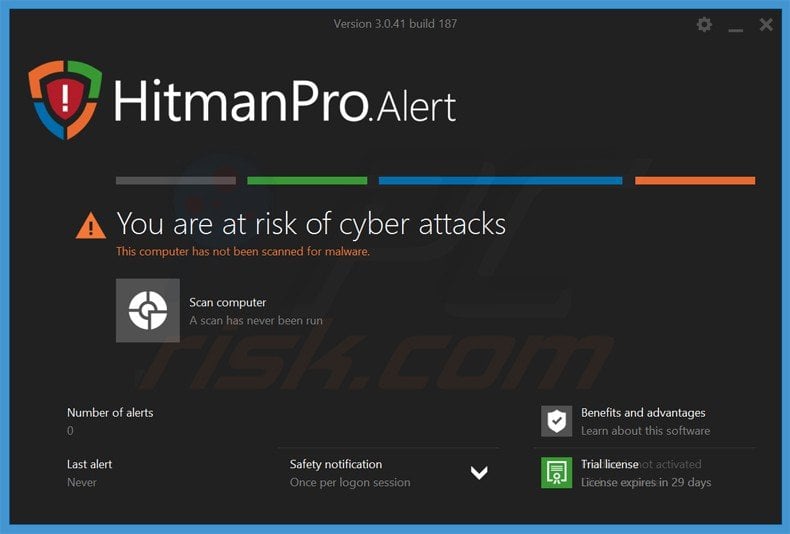
Malwarebytes Anti-Ransomware Beta uses advanced proactive technology that monitors ransomware activity and terminates it immediately - before reaching users' files:
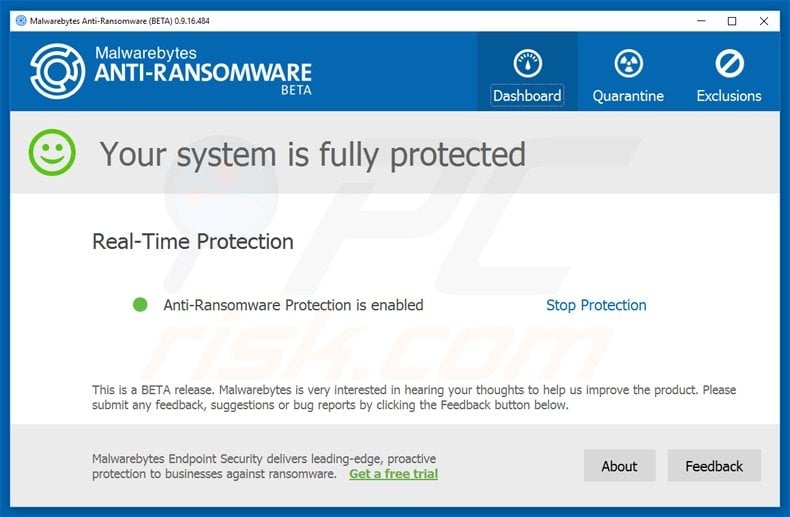
- The best way to avoid damage from ransomware infections is to maintain regular up-to-date backups. More information on online backup solutions and data recovery software Here.
Other tools known to remove X3M ransomware:
Comments
Post a Comment